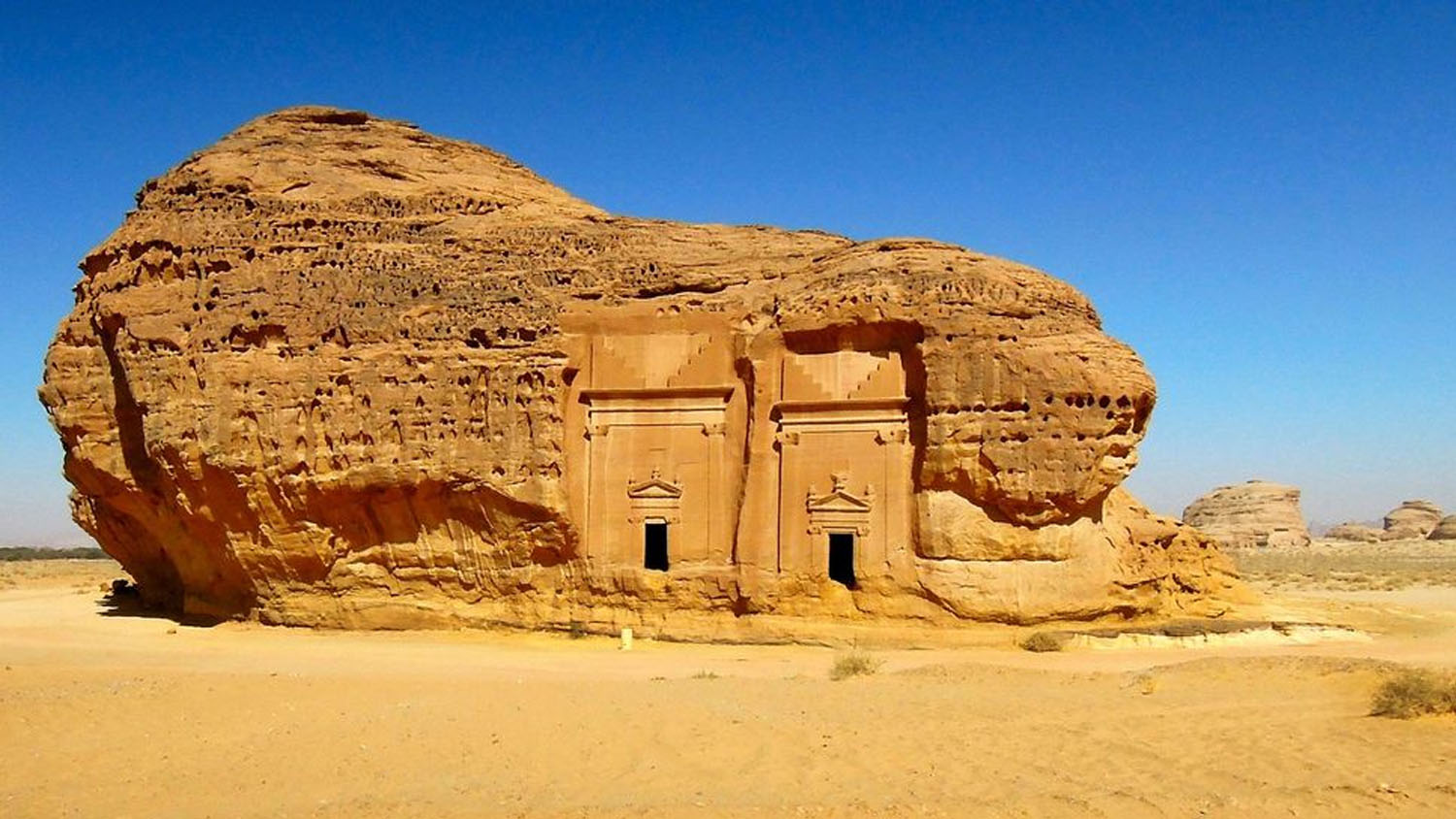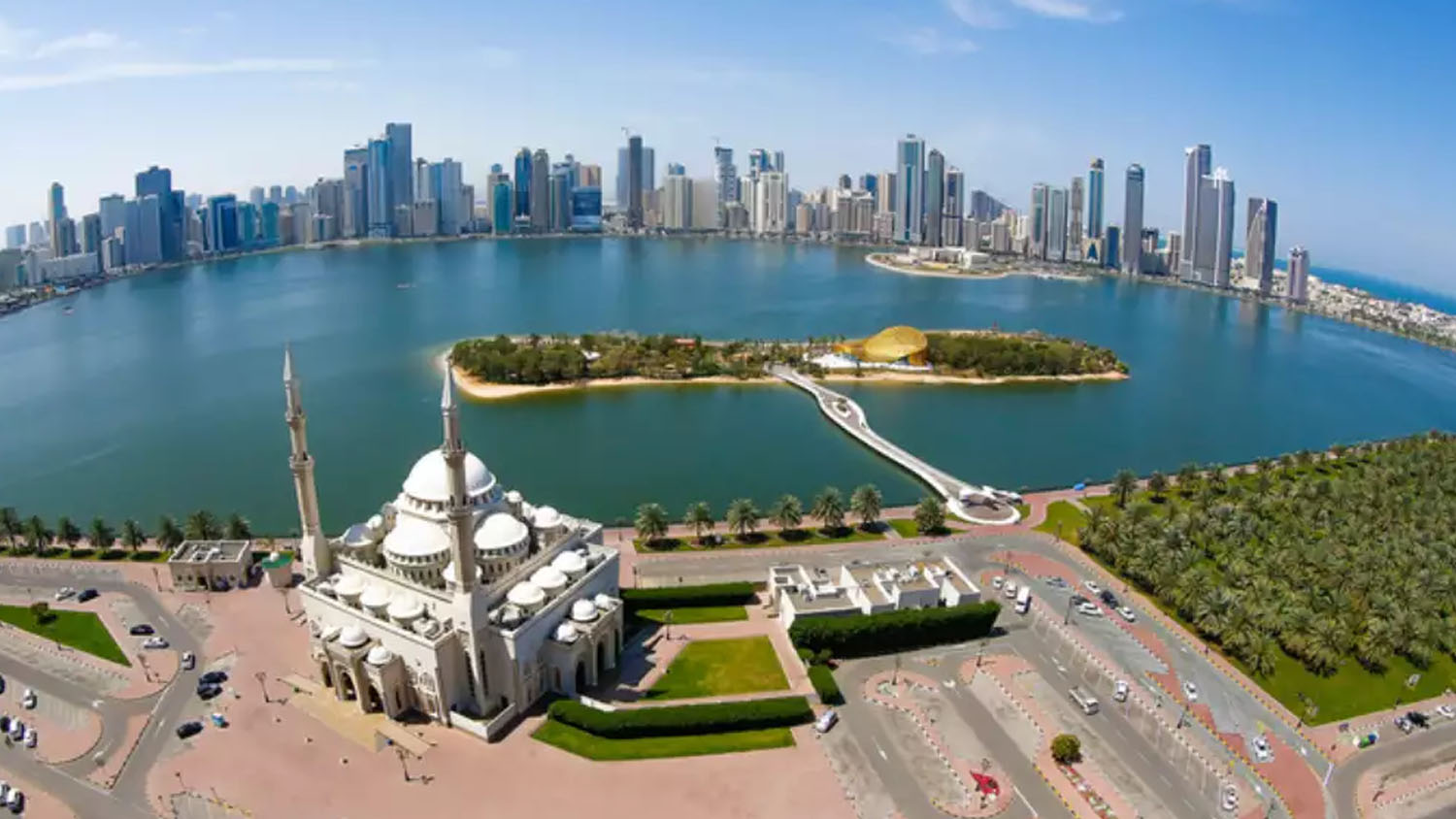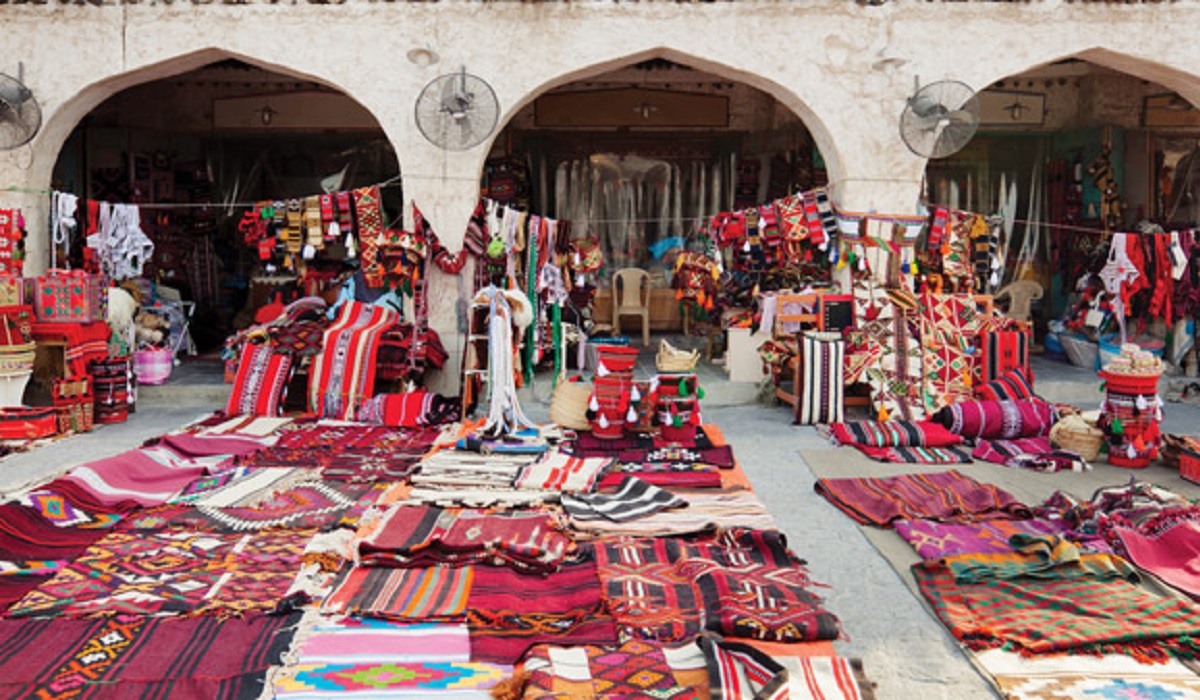Need My Travel Help?
Quick Links
Sign up for our mailing list to get latest updates and offers.
The spectacular emptiness of the Arabian landscape provides a blank canvas upon which is projected a riot of cultural, religious, intellectual and trading wonders.

‘No man can live this life and emerge unchanged,’ wrote Wilfred Thesiger of his travels with the Bedu across the Empty Quarter in Arabian Sands. ‘He will carry, however, faint, the imprint of the desert.’ The austere allure of the desert has attracted travellers to Arabia for centuries. Ibn Battuta, Marco Polo and TE Lawrence are among many famous travellers beguiled by the beauty and challenge of the barren landscapes. Thankfully, modern travellers no longer need to risk life and limb to encounter the wilderness as roads and camps make encounters with the desert possible for all.

When asked what they most like about their land of sand dunes, the Bedu near Al Hashman in Oman replied, ‘Coming to town’. Town! This is the Arabia of the 21st century, built on oil and banking – sophisticated communities looking to the future and creating empires out of the sand, or at least on land reclaimed from the sea. For those looking for a dynamic urban experience, the Gulf cities are the place to find it. With high incomes per capita, elegant towers, opulent hotels and eccentric malls, these cities offer the ‘pleasure domes’ of the modern world.
Also Read: Salalah Oman Travel Guide

The essence of the Arabian Peninsula lies in its people: good-natured haggling in souqs, cursing on long journeys and sharing sweet tea on the edge of wild places. Unifying all is Islam, a way of life, the call to prayer carried on an inland breeze, and gentle hospitality extended towards strangers. This is what many travellers most remember of their visit here – the ancient tradition of sharing ‘bread and salt’ and of ensuring safe passage, albeit given a modern context. Visitors can expect equally friendly exchanges in supermarkets as in remote desert villages.

It’s hard to think of Arabia without conjuring the Queen of Sheba and camel caravans bearing frankincense from Dhofar in Oman; dhows laden with pearls from Dilmun; the ruins of the empire in Saudi Arabia’s Madain Saleh. The caravans and dhows may be plying different trades these days, but the lexicon of The Thousand and One Nights that brought Sheherazade’s exotic, vulnerable world to the West still helps define the Peninsula today. Visit a fort, barter in a souq or step into labyrinthine alleyways and you’ll immediately discover the perennial magic of Arabia.

Mention ‘Arabia’ and a host of familiar, media-weary images probably appear. I’ve spent half my life studying these images – of wilderness, wealth and war in various academic pursuits. But there’s so much more to the sophisticated culture of modern Arabia than is conjured by these stereotypes. I love the Peninsula because each day I encounter the complexity of Arabia in the dynamic, warm-hearted people who lie at the core of the region’s enduring appeal. And of course, the desert, with its life against the odds, has inevitably crept into my soul.

For centuries Westerners have been attracted to the great desert wildernesses of Arabia, drawn by its limitlessness yet repelled by the void. ‘This cruel land can cast a spell which no temperate clime can hope to match,’ wrote Wilfred Thesiger in Arabian Sands after crossing the Empty Quarter on foot with the Bedu. Feel the desert’s allure in Oman’s Sharqiya Sands, or in the dunes of Liwa in the UAE, but beware: the summer sands don’t take prisoners, and the only stranger you’re likely to meet between dunes is yourself. Rub’ al-Khali desert, Saudi Arabia

Competitively slicing the sky, the audacious tower blocks that rise from the cities of the Gulf are a potent symbol of the region’s ambitions. At 828m, Burj Khalifa in Dubai is the tallest building in the world. Dine at the top of this, or any of the region’s futuristic totems of steel and glass, such as the Etihad Towers in Abu Dhabi or the Kingdom Tower in Riyadh, and you could quite literally be accused of burying your head in the clouds. Burj Khalifa, Dubai, UAE

In Arabia, the birthplace of Islam, faith is a living, breathing reality inextricably entwined in the daily lives of Peninsula inhabitants and encountered in the haunting call to prayer, the warmth of welcome enshrined in the Muslim code of conduct and, for Muslim visitors, in pilgrimage to the holy cities of Saudi Arabia. Visit the magnificent Sheikh Zayed Grand Mosque in Abu Dhabi or the Museum of Islamic Art in Doha, and see how faith has also been expressed in masterpieces of ceramic, carpet and furniture design. Sheikh Zayed Grand Mosque, UAE

They may not match the stock exchanges of New York, London or Tokyo in terms of dollars traded, but Arabia’s souqs claim a far more ancient lineage. Get lost in any of the region’s labyrinthine souqs, especially Doha’s Souq Waqif and Muscat’s Mutrah Souq, and participate in the brisk trade in olives, the haggle-to-the-death of cloth merchants and a collusive wink-and-a-nod over gulled customers. Souq Waqif, Doha

In contrast to its vast interior desert plains, the Peninsula also boasts some of the highest mountains and deepest wadis (dry riverbeds) in the Middle East. Camp near Oman’s Jebel Shams in winter for the spectacle of hail thundering into the wadis below. Watch how the precious water is channelled through ancient irrigation systems to plantations and high-altitude villages. Or for a dramatic drive, try the mountain road that takes you almost to the top of the UAE’s Jebel Jais, where you can expect matchless views of the surrounding cliffs and canyons. Jebel Shams, Oman

Ever dreamed of staring up at a night sky so packed with stars you can read a book by their light? Opportunities for wild camping abound across the Peninsula, not least on Oman’s desert island of Masirah, or any of the beaches along Oman’s eastern shore. Wilder-ness camping offers plenty of creatures (adapted to nocturnal living to escape the desert heat) but few comforts. If creature comforts are important to you, the resorts in the frontier town of Duqm offer less-rugged R&R. Masirah island, Oman

The ruins rise out of the gravel plains like lost camels or sit crumbling to dust on mountain ridges. They speak of past greatness, prophets, kings and forgotten dynasties. Some like the thousands of burial mounds that dot the landscape in Bahrain have been accommodated in urban landscapes. Others, such as the superb Nabataean ruins at Madain Saleh in Saudi Arabia, stand proud on forgotten plains. Sit among these ruins of empire and it’s easy to contemplate human frailty. Madain Saleh

Flanking the shores of Saudi Arabia, the crystal-clear waters of the Red Sea are home to epic dramas. In some of the world’s finest diving sites, clown fish play the comedians in coral gardens fit for a Zefferelli stage set, while sharks wait in the wings for heroic small fry. You don’t need to dive for a balcony view: don a mask, snorkel and flippers and swim anywhere off the coast at Jeddah and you can’t help but applaud the spectacle. Coral reef in the Red Sea, Jeddah, Saudi Arabia

It may not generate the headlines of Dubai or the sophisticated capital, Abu Dhabi, but Sharjah (p332) has quietly grown into the cultural hub of Arabia. In a celebration of local and indigenous heritage, Sharjah boasts the largest cluster of museums in the region with gems such as the Sharjah Heritage Museum among them. With the historic old quarter and chaotic alleyways undergoing a major renovation in a project called ‘Heart of Sharjah’, the city offers a sense of Arabia in the midst of the modern. Central Souk Sharjah, UAE

Arabia’s riches can be counted by more than the latest car or de- signer handbag. Gold twine in a dress cuff, a bead of carnelian threaded for a loved one, a basket woven with camel leather, words of wisdom entwined in a silver amulet these are the riches of the region’s ancient craft heritage. Find the most precious pieces collected under one roof in the enchanting, underground Tareq Rajab Museum in Kuwait City. Brass coffee pots in Abu Dhabi, UAE

From the cooling wind towers of Muharraq Island in Bahrain to Saudi watchtowers and the enigmatic tombs of mountain burials in Bat in northern Oman, the architects of Arabia have for centuries favoured the vertical over the horizontal. Visit Al Hamra in Oman’s Hajar Mountains, or just about any village in southern Saudi Arabia, to see where the fashion for high-rise living originated. Walk the capital corniches of the Gulf states to see how the modern Manhattans of Arabia continue the trend. Skyscrapers in Downtown Dubai, UAE

Gifted by wise men to babes (according to the Bible) and queens to kings (Queen Sheba to King Solomon), and harvested from the bark of ugly trees in the mist-swirling magic of summertime in Oman, frankincense is responsible for the history of Arabian empires. Catch its tantalising aroma in the house of a newborn, buy the curdled beads of amber-coloured sap in the souq or, better still, visit the living trees in Dhofar in the middle of the region’s unique and remarkable July Khareef (rainy season).

Cresting a hilltop, guarding a coastline, walling a village or securing a dried-out riverbed, there is barely a town in Arabia without some kind of crumbling battlement. Oman has some of the best preserved of the Peninsula’s forts in Bahla, Nizwa, Nakhal and Rustaq, but for a whole day out, Bahrain’s Fort Complex with its museum, coffeehouse and night-time illuminations, is hard to beat. Learn your forts (military only) from your castles (fortified residences) before exploring some of these mighty and magnificent buildings. Nizwa Fort, Oman

Modernity in many Peninsula countries can be summed up in two words: reclaimed land. Take part in the promenade of nations along Doha’s corniche, or indeed any of the Gulf corniches, and chances are you’ll be walking on water – or at least where water once was. But then again, you can climb any mountain in Arabia and claim the same: most of it was once under the sea and it would appear that modern architects are keen to reverse the tide of prehistory.

The ubiquitous 4WDs on Arabian roads are the modern ‘ships of the desert and can transport travellers into unimagined dimensions – including stuck in the sand and mired in mud. However, with some careful planning, and sticking to existing tracks, an off-road trip to Qatar’s Khor Al Adaid or Oman’s Jebel Akhdar is unforgettable. Follow the locals over the dunes, through floodwater and up mountains to see the best of the Peninsula’s varied landscape and discover the myriad plants and animals calling it home. Get the best deal possible on your upcoming trip to Oman when you book your Oman tours with Mountain Valley Holidays.